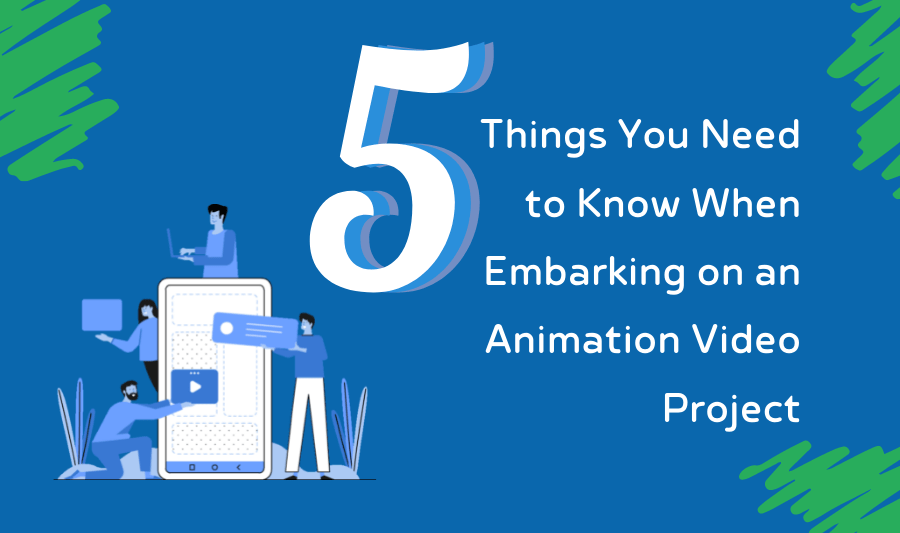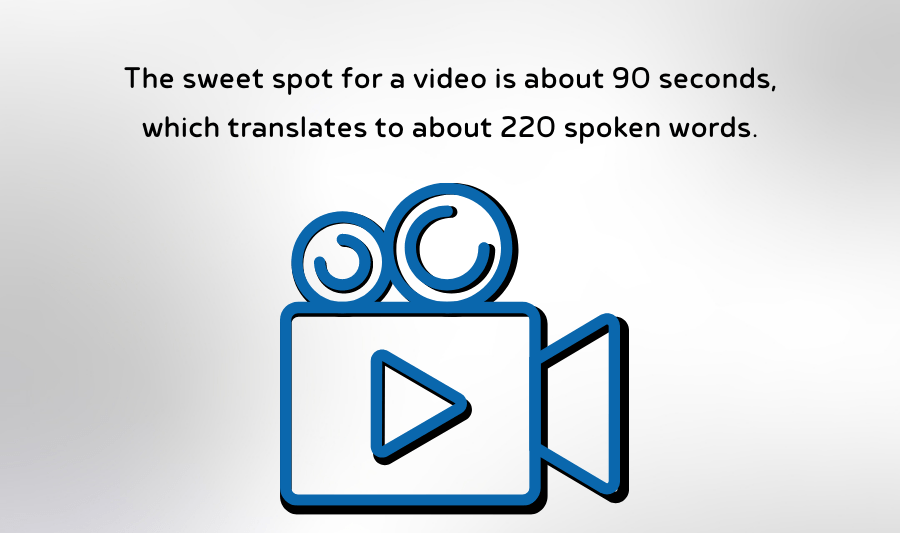
by Lisa | Feb 17, 2022 | Animation Video, Business
Your script is the backbone of your animation video. A great script gets your point across in a clear, focused, engaging way. It resonates with your audience, communicates a concept or narrative, and makes your message compelling.
Here’s what to know about creating a winning video script.
Before you start writing, define your brief and what success looks like. Figure out what the purpose of your script is, and what channels and formats it’ll be distributed across. As you draft, refine, and revise your script, keep referring back to your brief to make sure that you’re on target. It’s easy for a project to evolve creatively and end up straying from the brief! When we review your script, the team at See In Colors will confirm with you any goals or objectives and make suggestions if needed.
Knowing your audience is #1. Who are they, what do they want, and what do they need to know? This will help you figure out what kind of background information you need to share, how in-depth you need to go, and what kind of tone is appropriate. An animation video on PPE (Personal Protective Equipment) for medical safety will be presented very differently from a corporate anniversary timeline video. Make sure your audience is defined and that you’re communicating effectively to ensure the message lands.
Storytelling is critical to your animated video’s success. Think about the information or message that you’re trying to convey, then step up your game by transforming it into a story. Be authentic and human, use anecdotes and observations to highlight points, problems and solutions. Consider traditional story arcs and see how you can align your script with these. Great storytelling will make for a more engaging script – and help build empathy with your audience.
We live in a world of highly abridged attention spans. The sweet spot for a video is about 90 seconds, which translates to about 220 spoken words. Cutting your script too short risks skipping over critical information, while running long means that people are likely to tune out. If your script is 500 words long (or more!), think about what can be cut or explained in a more efficient way.. If length is an issue, See In Colors can help you with some creative solutions.
Something may sound good on paper but not necessarily flow when read aloud. Make note of things like sentences that are too long, the use of confusing acronyms, stilted and overly formal language, or words or phrases that make you stumble. You can use the “read aloud” feature in MS Word and Google Docs so your script can be read to you. It’s a quick and easy way to catch awkward sections that you can rework or remove. Read over your whole script every time you make a change to make sure that it still flows!
You’ve spent ninety seconds with someone hanging on your every word. You went to all that effort because you want them to do something – not just say “that’s nice” and then click away. Always add a call to action (CTA) that reflects what you want them to do next. Do you want the viewer to sign up for something, share feedback, or adopt a new business practice? Let them know in a quick, clear manner. Our team will always check to confirm that your script has a CTA, and help you define one if not.
If you’re about to embark upon an animation video project and want to make sure that your script is on point, book a consultation with See In Colors. We’ll help you take your script – and your video – to the next level.
Here’s what to know about creating a winning video script.

by Lisa | Feb 5, 2022 | Animation Video, Business, Leadership, Technology, Visual Thinking
Animation video is a powerful way to share information, tell stories, and boost learning. Whether your goal is to explain a product or service, or to make information stick for training and development, video elevates your communication by making it possible to break down complex ideas and processes while driving engagement and focus.
But video can also be expensive and time-consuming – with a steep learning curve. Before you embark upon your first video project, here’s what you should know.
Ever cringe your way through a bad movie? The fault probably isn’t with the acting or the special effects. No amount of flashy camerawork or fancy editing can make a great script shine. Perfect your script before you start animation and you’ll save yourself a world of pain (and money). Know who your target audience is, what you’re trying to communicate, and what your call to action (CTA) is. Your CTA creates conversions, so make sure it’s tight, clear and actionable. And don’t forget to keep your script on point: about 90 seconds (220 spoken words) is the sweet spot.
Storyboarding is a way to visually outline the information you’ll be presenting. Use it to create a timeline, identify key scenes and speakers, decide what detail needs to be added to each scene, and figure out your transitions. This is a huge but necessary step – so don’t skip it! Storyboarding will help you hone in on your budget, actors, style, and timeframe. At See In Colors we often consult with clients at this stage to make sure that they’re making powerful use of their visual medium – and that their story is being clearly and effectively communicated.
Music, sound effects, and voiceover delivery are the key things to think about when it comes to your video’s audio. Music sets the tone for your video and fosters certain emotions and experiences in your audience, from the uplifting to the serious to the motivational. Stock music can be affordably sourced through royalty-free databases, but costs add up quickly if you want to license a well-known song. Another thing to think about is who will do your voiceover – someone in-house or a professional? Your choice will influence the mood, style and reception of your video. If you decide to opt for a professional, See In Colors can point you to a great portfolio of proven voiceover artists to convey the tone you desire.
Today, many corporate videos lean heavily on animation. Motion graphics (animated illustrated footage), closed captions or dynamic sketch notes are all powerful options depending on what you’re trying to communicate. Motion graphics are visual aids that are great for breaking down facts and data – such as when explaining stats, processes or procedures. In contrast, whiteboard animation can help get a point across while also telling a story. See In Colors can help you decide which is right for your video, and walk you through stylistic options that will resonate with your branding.
The more work you put in up front, the less reworking you’ll have to do later. If you’re new to video projects, talk to the team at See In Colors to make sure you’re checking every box on the video project to-do list. Making the right strategic decisions early on will reduce time and resources spent editing, rewriting, and redesigning your video.
Ready to press play on a video project? Talk to See In Colors to ensure your project moves forward seamlessly – and with the impact it deserves.

by Lisa | Jan 20, 2022 | Business, Leadership, Uncategorized
The past two years have involved significant organizational change and reshuffling. From navigating remote and hybrid environments to embarking upon new programs and initiatives in response to market shifts, leaders have had to help their organizations quickly and efficiently adapt. With 2022 ahead of us, here are the leadership trends we expect to see.
Temporary remote working has given way to long-term hybrid working arrangements. Building an inclusive culture that gives the same consideration and weight to off-site workers as to in-office ones is vital. To retain a robust culture of engagement, focus on keeping communication channels open and remote workers actively involved.
The past two years have carried a huge emotional weight for staff at all levels, and team members have expectations around an organization’s responsibilities regarding their wellbeing. Investing in organizational wellness through increased benefits, flexibility around leave and work hours, and health-forward programs will improve organizational outcomes – and reduce burnout and attrition.
Increases in automation and career precarity have created fear around the future of work. Allay team members’ concerns by investing in development initiatives including upskilling, job rotations, expanded responsibilities, coaching, and mentoring. These will not only increase organizational capacity, but will foster team buy-in and engagement.
Actionable, outcome-based Diversity, Equity and Inclusion initiatives are critical in today’s workplace. Work to ensure that responsibilities are equally shared, that growth is present, and that traditionally underrepresented groups are given opportunities to speak up and take the floor – and are supported at all levels of their career.
Burnout is one of the biggest challenges currently facing organizations. The erosion of work-life boundaries in a remote or hybrid environment coupled with staffing changes and the demands of caregiving have placed extra demands on team members. Embracing flexible work hours and working arrangements, including fully remote or hybrid options, will help reduce burnout and foster an improved working environment.
The ability to acknowledge and adjust to change is more vital than ever. Leaders will need to quickly react to market shifts, rapidly synthesize data and course correct accordingly. This requires keeping communication channels open and soliciting input and feedback from a variety of sources – as well as being bold when it comes to decision-making.
While having an agile mindset is vital for navigating the inevitable changes the coming year will bring, so too is being able to maintain organizational consistency. Too much change can create friction and instability, so finding ways to sit tight and keep moving forward will be critical in 2022.
Need to get your organization in sync and ready to move forward into 2022? We’re here and ready to help you plan and execute your upcoming meeting. To learn more about our meeting consulting and facilitation services please contact us today.

by Lisa | Jan 18, 2022 | Business, Leadership
New year, new goals! But before you head to the whiteboard to outline your anticipated wins and plan ahead with the team, take a moment to consider the context they’re being made in. During these past two years, stress, burnout, market changes, and the need to adjust to endless change have been common themes for workers, leaders, and program managers alike. When setting goals for 2022, be mindful of this context so that you can walk the line between aspirational and achievable – and take your organization to the next level while staying true to your mission.
You’re an expert in your field, something that has brought plenty of opportunities your way in terms of connections, leads, and market intel. When setting your 2022 organizational goals, start with the low-hanging fruit – the things right in front of you – and go from there. Just because it’s easy doesn’t mean it’s worthless. In fact, it probably only seems easy because you and your team have put in all the groundwork needed to make it this far.
You and your team are in this for a reason. You’re committed to your organizational mission. Put pen to paper and jot down the mission-relevant things that first come to mind, and that you’re most excited by. What victories have meant the most to you and your team? What opportunities collectively excite you? When you’re prioritizing the things that matter most to your shared mission, you’ll be that much more likely to succeed.
Burning ambition is an admirable trait. But it’s critical that you back up those big-picture dreams with a concrete, achievable path for getting there. Goals are things that you can identify, measure, and achieve as a team or organization – not through luck alone. Define exactly what success looks like, when it needs to be achieved by, and what resources, personnel, or expertise you’ll need to get there – then follow your game plan to a T.
We all love the dopamine buzz we get when we complete a task. Position your organization for success by creating goals that can be divided up into a series of smaller, incremental tasks. And think beyond the standard work metrics to include things like professional development, training, time off, team bonding, and new tech. For example, a goal to not work past 5:00pm each night is one that your whole organization will want to keep – and on the plus side, it’ll encourage your team to use their time wisely during the day.
You’re part of a team, so loop in that team on your goal-setting. Invite your team or organization as a whole to identify the things they want – or don’t want – to see in 2022, and to put forward their own individual and group goals so you can see where you’re aligned. You can gather this information during a team meeting or asynchronously through file upload or chat services, or put together surveys and quizzes to see where people stand. Getting everyone on the same page and highlighting shared goals and plans will reduce friction and encourage organizational buy-in.
Before you get your team or organization together to discuss your 2022 goals, talk to See In Colors. Our graphic recording and sketchnote services provide a powerful visual aid that ensures everyone’s voice is being heard – and that your whole team has a comprehensive snapshot of your 2022 goal-setting discussion.
Here’s to a high-impact 2022!

by Lisa | Dec 23, 2021 | Business, Leadership, Productivity
December is a time of low productivity for most companies, so it makes sense that business owners want to hit the ground running in January. If your employees are struggling to shake off those post-holiday blues, here’s what to do.
- Set and Lean into New Year’s Resolutions
Goal setting is a great way to motivate people and keep them on task, especially if those goals are team-based. When you reconvene in the New Year, set aside time to define group and individual goals for the year – and see what employees need from you to ensure they’re achievable. This might mean providing tech training sessions, offering group outings, or empowering your team to make critical decisions.
- Check in With Team Members About Career Goals
New Year’s resolutions are often career-based, which means that your team might be thinking about the next steps in their career. Keep them focused on climbing the ladder at your organization (and not another one!) by meeting with them one-on-one to learn about their career goals, discuss organizational mobility, and creating a plan for progressing their career.
- Celebrate the Past Year’s Achievements.
That final pre-holiday December Friday is typically a day of frantic emailing and list-checking – with little time to reflect on the achievements or milestones of the year that’s just passed. Once you’re back in the office, carve out some time to go over the many individual and team successes from the past year, and celebrate alongside your team. Highlighting the positive impact of their work will help them start the new year on the right foot.
- Gamify Your First Week Back.
If your team is struggling to get back into the flow of work, gamify the experience. Identify desired outcomes and valuable markers of productivity, then create a way to highlight and celebrate them when team members meet them. Use a framework like a sport or a gameshow to encourage people to bring their best to the table – but just make sure that your game design is designed to uplift, not punish.
- Model that New Year’s Enthusiasm.
As an organizational leader, you’re a steward for your company’s culture. If you want your team to feel energized and upbeat after the holiday break, make sure you model the behavior you want to see. Greet everyone, ask about their time away, and encourage them to make the New Year their best one yet. If you’re feeling positive, they will be as well.
- Loop in Remote Team Workers.
Remote and hybrid workers in particular can struggle to feel that back-to-work motivation. You can make sure these team members are included in your “welcome back” efforts by pinging them on chat programs, having them collaborate on goal-setting tasks, throwing a virtual party, and making sure they’re included in all 2022 planning and updates. Workers who feel included and appreciated are far more likely to put in the effort.
If you’re incorporating virtual or remote solutions into your back-to-work efforts, talk to See in Colors. Our collaborative graphic recording and sketchnote services can help transform your annual meeting or town hall into a high-impact presentation that inspires staff to dig deep in 2022. For more information, get in touch today.

by Lisa | Dec 17, 2021 | Business, Facilitation, Leadership, Tech Hosting
While we’re all experts at virtual meetings after these past two years, hybrid meetings pose a unique challenge. It’s all too easy for remote participants to feel overlooked or that their ability to chime in and share their ideas is limited.
But with McKinsey estimating that 90% of organizations have adopted or will adopt hybrid working approaches post-pandemic, getting those hybrid meetings right matters.
Here are 7 common mistakes that can derail a hybrid meeting.
- Poor audio quality
Many organizations focus on the visual aspects of their meeting, to the detriment of audio. When most of the audience is in the room together, the ability to hear each other can be taken for granted. Now is the time to equip your meeting room with high-quality microphones to ensure that remote participants can easily hear everyone talking. Passing around a hand-held microphone is another option to improve audio access for remote participants.
- Poorly thought out visuals.
Presentations that rely on visuals can pose a barrier to access for remote participants. If your team is presenting a slideshow, video or other visual-heavy media, keep and hold attention by ensuring that remote viewers can see all text and graphics, as well as presenters and other participants. Rather than using a “share screen” option, set up a quality webcam that offers a clear, full view of the presentation space so that the people who are attending remotely feel as though they’re actually in the room. Having someone in the room sketch out the meeting notes can also boost engagement and improve comprehension and engagement.
- No moderator or facilitator.
Meetings don’t run themselves. A meeting without a clear facilitator results in uneven floor time and fewer opportunities for participants – and especially remote participants – to ask questions or share the floor. They can also run over their allotted time, which can be a frustration for those working from home. Appoint a facilitator who can oversee the meeting and make sure that remote participants are given time to and opportunity to speak up.
- Long meetings…or meetings that could be an email.
Most employees aren’t fans of meetings in the first place, and the longer the meeting, the more challenging it is to keep people engaged and present. This is particularly true of virtual participants. When outlining your hybrid meeting, give it a hard stop, and ensure that virtual participants are only required to attend for the parts of the meeting that are relevant to them. This will help keep your meeting on track while ensuring that your employees get the most out of the meeting time.
- Minimal channels for engagement.
In a hybrid environment it’s natural to focus on who’s in the room, which is bad news for remote participants. Remote employees can easily end up being silent participants if they’re not actively called upon, or if their only option for speaking up is through their microphones – which are usually muted anyway. Schedule time for Q&As, and include options such as live chats, polls, speed networking, and breakout rooms so that remote employees can be equal participants.
- Not having an intermediary for remote participants.
Rather than having remote participants address the room directly, provide a designated intermediary who can take questions or comments, then address the room. This goes both ways – these intermediaries can also help provide feedback from remote participants to presenters without the need for remote participants to spend the meeting publicly asking for people to speak up or repeat things.
- Not testing your tech.
Failure to do a dry run ahead of time is a courting disaster. Always do a quick run-through of your meeting to check that your set-up works for both remote and in-person participants, and that any tech, media, or software you’ll be using during the presentation works as it should. If you can, host digital aspects of your presentation locally rather than in the cloud to minimize the risk of delays and glitches. And always have a back-up plan – and back-up tech – just in case.
Ready to deliver a perfect hybrid meeting environment? We offer graphic recording, meeting consulting or meeting producer services to help elevate your meeting. Talk to us today to learn which of our services is right for you!







